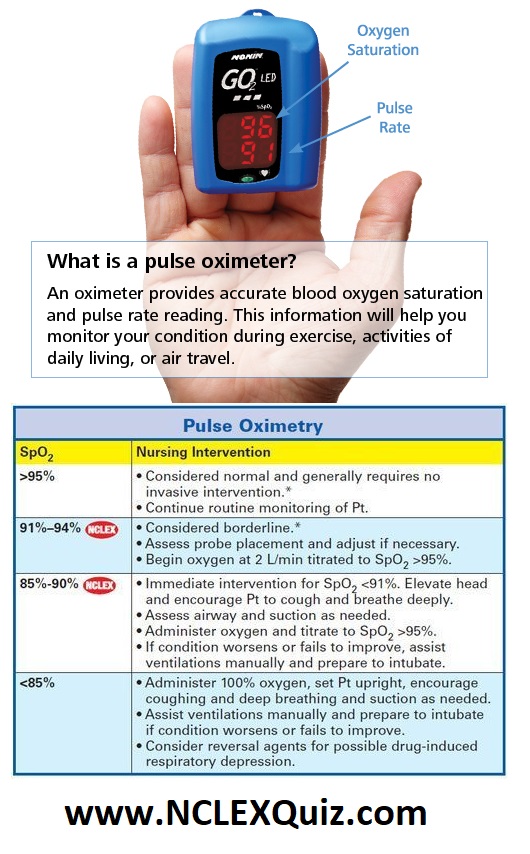Pulse Oximetry Nursing Interventions
Pulse oximetry is an important tool in patient assessment. Hereʼs what you need to know about how it works—and how to use it properly.
Tips to Treasure: Pulse Oximetry Considerations
Pulse oximetry offers an easy and non-invasive measurement of oxygen saturation, but has limitations and practice considerations that every nurse should be aware of.
Oxygen saturation (SpO2) is a measurement of the percentage of hemoglobin molecules carrying a full load of oxygen. Oxygenated hemoglobin (HbO2) absorbs more infrared light than red light, while deoxygenated hemoglobin (Hb) absorbs more red light. By comparing the relative amounts of different light absorbed, the oxygen saturation (SpO2) can be determined.
However, there are some possible causes of erroneous readings:
• Motion artifact: Movement (shivering or tremors) or improper fit of the sensor can cause erroneously low readings.
• Hypotension (due to cardiac arrhythmias, blood loss or peripheral vascular disease) and peripheral vasoconstriction (caused by hypothermia, smoking or sickle cell disease) can alter readings.
• Smoke inhalation or carbon monoxide poisoning can cause high levels of carboxyhemoglobin and also skew pulse oximetry readings.
• Response delay: A technical limitation that requires additional time to detect hypoxemia (SpO2 less than 90 percent). The length of delay can be affected by poor sensor site perfusion and vasoactive drugs.
